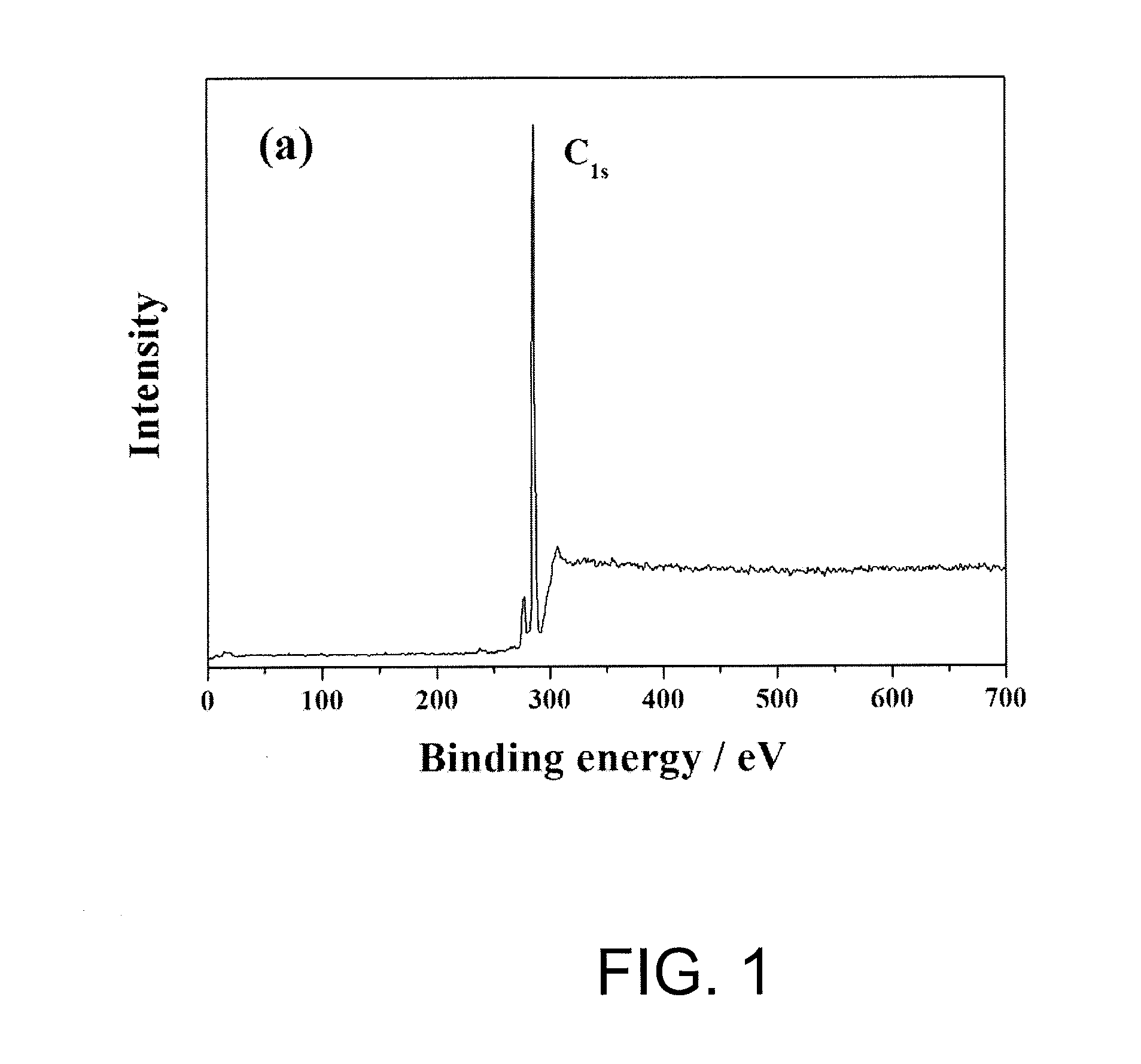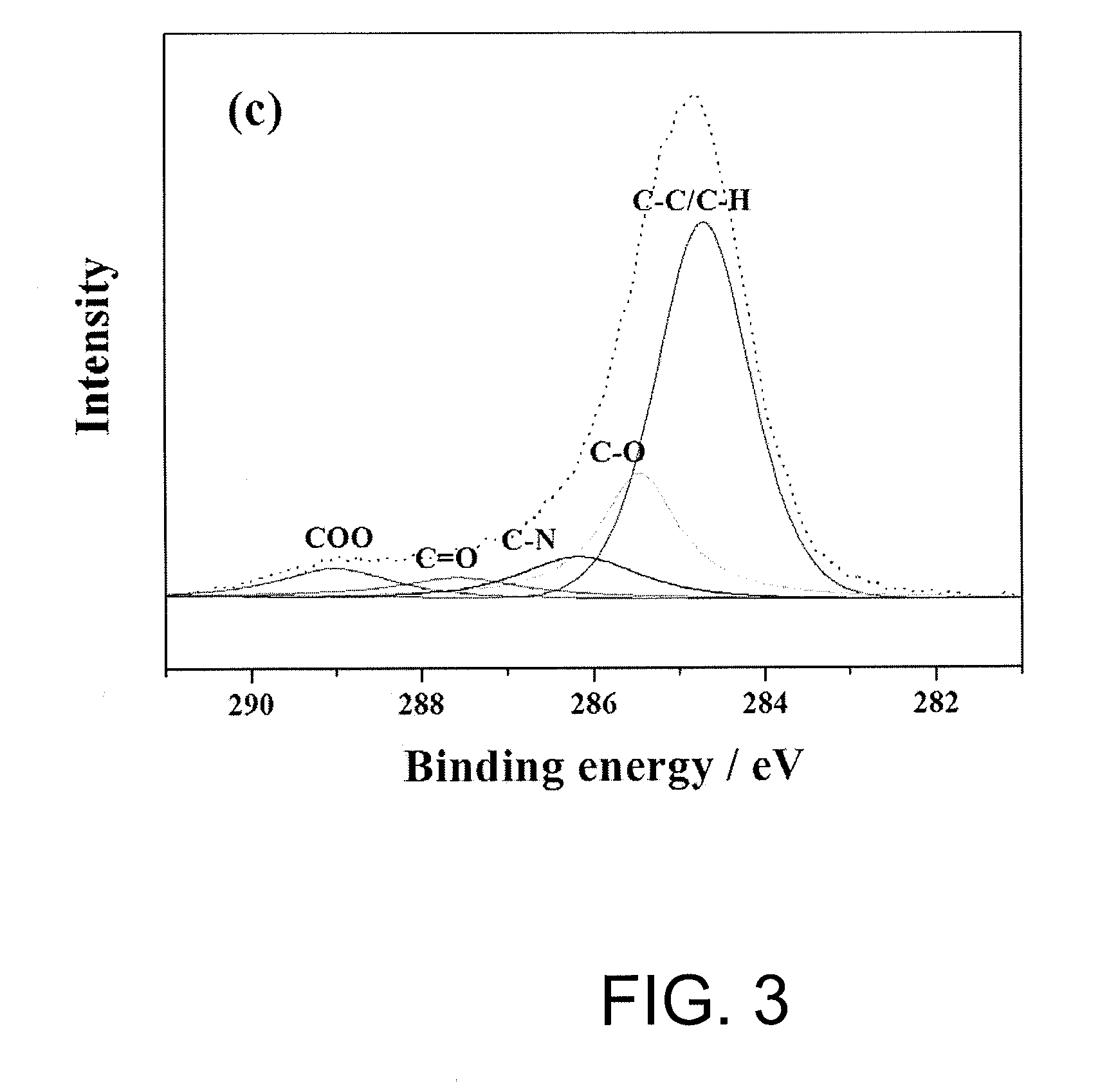Polyolefin Microporous Membrane Surface-Modified By Hydrophilic Polymer, Surface Modification Method Thereof And Lithium-Ion Polymer Battery Including The Same
a polymer and hydrophilic technology, applied in the field of polyolefin microporous membrane surface modification, hydrophilic polymer surface modification method thereof and lithium-ion polymer battery including the same, can solve the problems of reducing the mechanical strength and stability of the enhanced battery, reducing the mechanical strength and heat resistance of the membrane, so as to reduce the distortion of the membrane, maintain the pore characteristics, and increase the mechanical strength and heat resistan
- Summary
- Abstract
- Description
- Claims
- Application Information
AI Technical Summary
Benefits of technology
Problems solved by technology
Method used
Image
Examples
example 1
Surface Modification of a Polyolefin Microporous Membrane
[0065]After a microporous membrane made of polyethylene was dipped in an acrylonitrile-containing solution for 5 minutes, the membrane was plasma treated for 10 minutes at 400 W in a plasma reactor to prepare a polyethylene microporous membrane of which both surfaces are coated with a polyacrylonitrile polymer.
example 2
Preparation of a Lithium Ion Polymer Battery
[0066]Step 1: Preparation of an Organic Solvent-Type Electrolyte Solution and a Gel Polymer Electrolyte
[0067]Ethylene carbonate (EC):ethyl methyl carbonate (EMC):diethyl carbonate (DEC)=3:2:5 vol % of organic solvent was prepared, and 1.3M LiPF6 as an electrolyte salt was dissolved in the resulting solution to prepare an organic solvent-type electrolyte solution.
[0068]Urethane acrylate (UA):hexyl acrylate (HA)=3:1 weight % of a polymer precursor and 2,2′-azobis(2,4-dimethylvaleonitrile) used as an initiator were dissolved in the organic solvent-type electrolyte solution prepared above to agitate sufficiently at room temperature, and then the resulting solution was subjected to polymerization reaction for 4 hours at 75° C. in a vacuum oven to prepare a gel polymer electrolyte.
[0069]Step 2: Preparation of a Lithium Ion Polymer Battery
[0070]A slurry mixed in the ratio of 96 wt % of LiCoO2 as a cathode active material, 2 wt % of acetylene blac...
experimental example 1
Surface Analysis by X-Ray Photoelectron Spectroscopy
[0075]Surface analysis for the polyethylene microporous membrane of Example 1 and Comparative example 1 was carried out by employing X-ray photoelectron spectroscopy (XPS, VG ESCALAB 220-I system), and the results are shown in Table 1 and FIG. 1 to 3 below.
TABLE 1Result of surface analysis for apolyethylene microporous membraneFunctional groups (%)C—C / C—HC—OC—NC═OC—O—OExample 163.7717.547.555.006.14Comp.98.371.16—0.260.21Example 1
[0076]From the results shown in FIG. 1 to FIG. 3, it was observed that the polyolefin microporous membrane of which surface is modified according to the method of the present invention (FIG. 2) had functional groups of C—O, C—N, C═O, C—O—O and C—C / C—H on the membrane surface in contrast with the existing polyolefin microporous membrane without surface modification (FIG. 1). In addition, Table 1 and FIG. 3 shows distribution chart for functional groups observed on the surface of the polyolefin microporous m...
PUM
| Property | Measurement | Unit |
|---|---|---|
| pressure | aaaaa | aaaaa |
| plasma power | aaaaa | aaaaa |
| temperature | aaaaa | aaaaa |
Abstract
Description
Claims
Application Information
 Login to View More
Login to View More - R&D
- Intellectual Property
- Life Sciences
- Materials
- Tech Scout
- Unparalleled Data Quality
- Higher Quality Content
- 60% Fewer Hallucinations
Browse by: Latest US Patents, China's latest patents, Technical Efficacy Thesaurus, Application Domain, Technology Topic, Popular Technical Reports.
© 2025 PatSnap. All rights reserved.Legal|Privacy policy|Modern Slavery Act Transparency Statement|Sitemap|About US| Contact US: help@patsnap.com



